Rice Nutrition
In over 150 years in the business, Riso Gallo has never stopped studying what over half of the world’s population considers the king of cereals due to its amazing nutritional values. This section is devoted to examining information on the relationship between rice and nutrition:
RICE FACT SHEET
Scientific name: Oryza sativa L.
Family: Graminacee
Origins: China, 6,000 BC
Diffusion: worldwide
Panicle: the inflorescence that contains the grains
Caryopsis: the single grain of rice
Husk: the hard, rough shell that encloses the grain
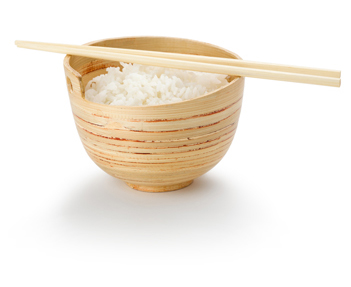
THE CEREAL GRAIN THAT IS MOST WIDELY CONSUMED BY MAN
To obtain rice that is perfectly “al dente”, it must be lightly toasted to seal the grains of rice and close the pores. When the soffritto is ready, turn up the heat, pour the rice into the saucepan and stir continuously using the all-essential wooden spoon. When the rice begins to stick lightly to the pan, add some white wine to give the rice a slight hint of acidity as it evaporates and give the risotto its distinctive flavour.
LEGENDARY PRODUCTIVITY
One plant is grown from a single grain of rice which, at the end of the vegetative cycle, produces a series of inflorescences or panicles (just like maize) each of which can hold up to 300 grains. Its extraordinary productivity has made it a symbol of prosperity and well-being throughout the world and the subject of fascinating tales and legends.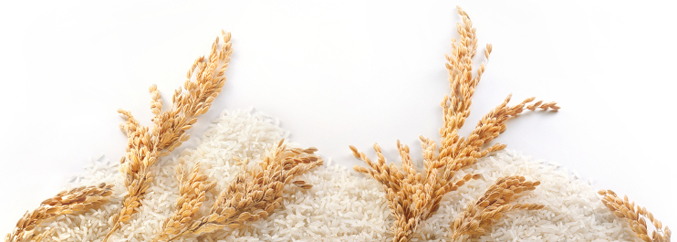
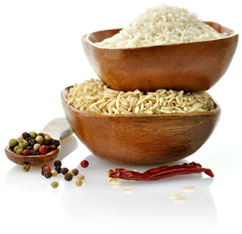
A WEALTH OF BIODIVERSITY
With its nutritional qualities, rice is a valuable partner in a diet that is inspired by a search for well-being as well as flavour — for many good reasons…NUTRITIONAL VALUES
Rice is one of the most nutritional foods that nature has given man and is the main staple food for over half of the world’s population.
A rich source of complex carbohydrates which give energy to the body when transformed into glucose, it has a low lipid level and its proteins have a high biological value (the FAO gives rice a protein value of 69 compared with 49 for wheat and 44 for maize).
The fact that it is highly digestible means that it is completely assimilated in sixty to one hundred minutes, much less than the amount of time needed to digest all the other cereal grains.
Protein, vitamins, lipids, mineral salts, calories…
Discover what a plate of rice contains
Calories 358 kcal
Calories 1498 kJ
Fats 0.52 g
Carbohydrates 79.15 g
Protein 6.5 g
Fibre 2.8 g
Water 13.29 g
Ash 0.54 g
Minerals
Calcium 3 mg
Sodium 1 mg
Phosphorus 95 mg
Potassium 76 mg
Iron 4.23 mg
Magnesium 23 mg
Zinc 1.1 mg
Copper 0.21 mg
Manganese 1.037 mg
Selenium 15.1 mcg
RICE COMES IN LOTS OF DIFFERENT TYPES…
The quantity and quality of the nutritional content of rice varies according to the variety and the industrial process that the grains undergo.
The nutritional content of brown and parboiled rice is higher than white rice for example.
Brown rice that is not polished, for example, has a higher carbohydrate and protein content but fewer calories which drop down to 100 for every hundred grams of rice. The main advantage of brown rice, however, is its high fibre content which makes it essential to the correct functioning of the intestine.
Parboiled rice, on the other hand, contains more mineral salts and vitamins which are preserved inside the grains of paddy rice when they are parboiled and withstand husking and other forms of processing.
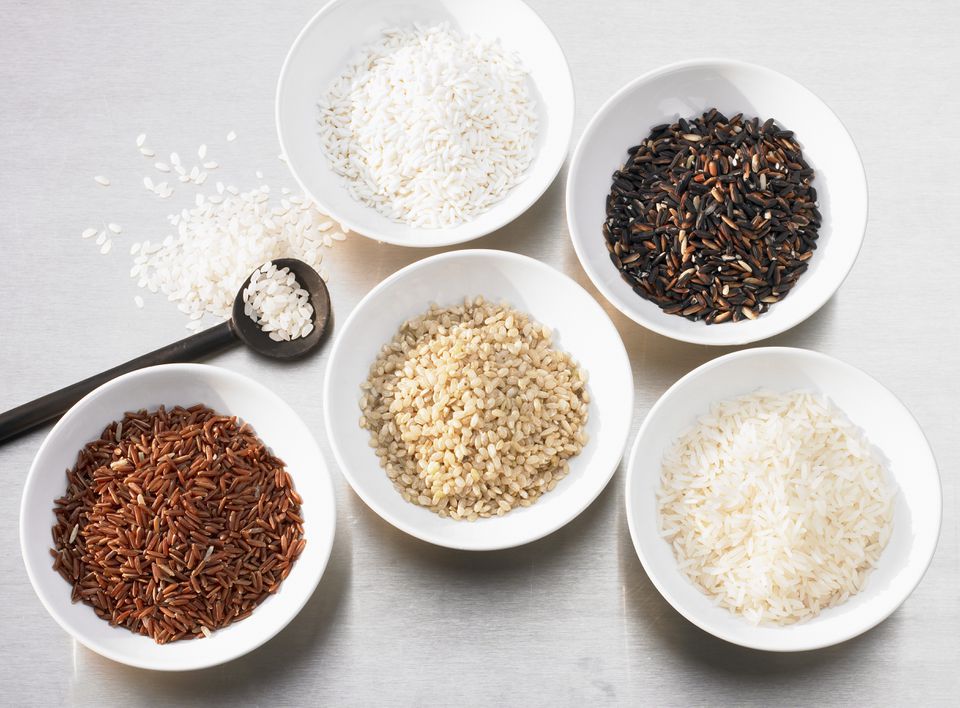
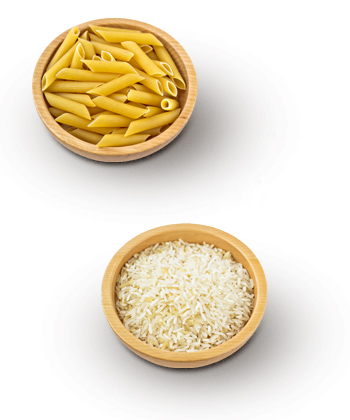
PASTA OR RICE?
In Italy the culinary showdown between rice and pasta is a question of tradition as well as folklore; but what are the differences between the two from a nutritional point of view?
If we compare 100 grams of each, without any form of condiment, we can see that pasta has a slightly higher calorie content, has more fibre, lipids and protein and contains less water and carbohydrates.Although rice has a lower protein content than pasta, it has more essential amino acids which increase its protein value.
It takes from one to almost two hours to digest rice compared with the three or four hours needed for pasta and the fact that its weight triples when cooked guarantees a higher satiety score than pasta.It should be noted that it has a higher chemical* index which makes it equivalent if not superior to pasta.Although they have very similar nutritional characteristics, in the showdown between rice and pasta, rice is the winner.
RICE AND… COELIAC DISEASE
Coeliac disease is a permanent intolerance to gluten which is a protein found in oats, wheat, spelt, kamut, barley and rye…
However, it is not found in rice which makes it a vital food for coeliacs (as many as 600,000 according to estimates by the Italian Association of Coeliacs even if just over 100,000 have been diagnosed so far). Since if even small quantities of gluten are eaten, this can lead to serious consequences.
Although several gluten-free products have been created for this type of intolerance, rice continues to be a coeliac’s best friend.
RICE AND… THE INTESTINE
According to the most important nutritionists, the most suitable cereal grain for an anti-inflammatory diet for the intestine is brown rice because it contains special substances that fight the biologic agents involved in inflammatory processes.
Polished rice, on the other hand, has mild astringent properties which you can take advantage of by eating boiled rice or drinking the water that rice has been cooked in, which has a high starch content.
Finally, the fibre in brown rice encourages the formation of beneficial microorganisms in the intestinal flora that can fight pathogenic bacteria.

